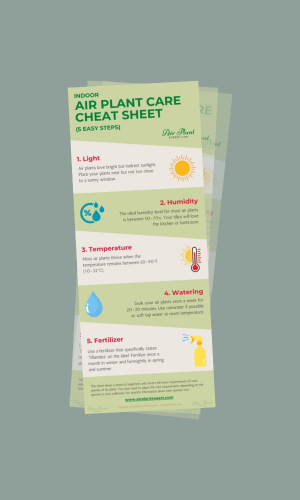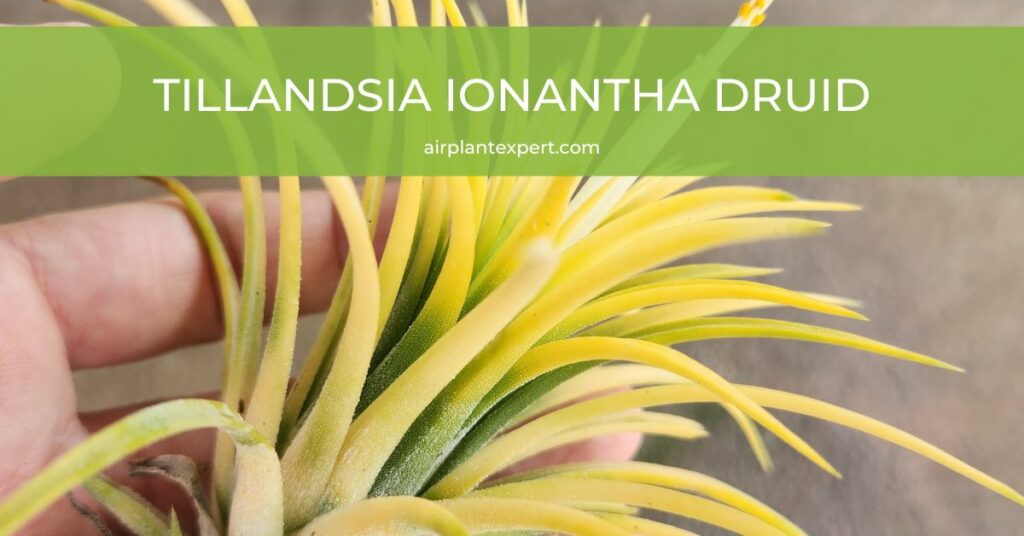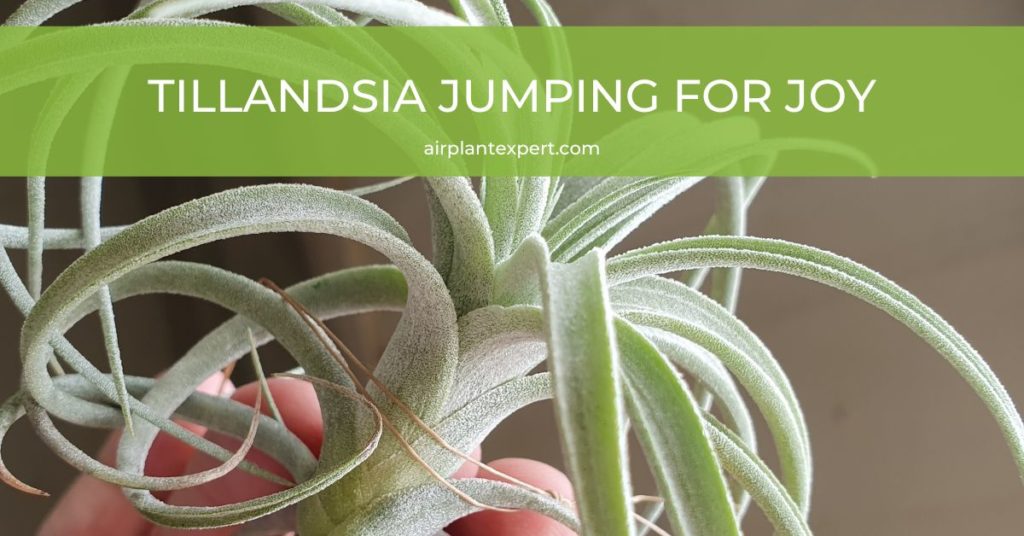Tillandsia Ionantha Druid is a particularly impressive variety of Ionantha. With bright green leaves and white flowers, this variety has to be my all-time favorite. Such a beautiful air plant.
Quick Guide
How To Care For Tillandsia Ionantha Druid
Tillandsia Ionantha var. Druid is believed to be an albino form of Ionantha. This variety has bright green leaves that are covered in thousands of hairlike trichomes.
As Druid grows the leaves begin to curl outwards. At this time most Ionanthas would display darker green foliage. However, Druids leaves, if given bright light, will maintain their bright green color.
Bright indirect light, warmth, and humidity are all key to growing these beautiful watermelon-colored plants.
I like to mount Druid on the thinnest aluminum wire holder I can find so as not to distract from the plant’s natural beauty. My preference is green or yellow wire.
How To Water Tillandsia Ionantha Druid
I like to soak Tillandsia Ionantha Druid every week for about 20-30 minutes. You can also supplement soaking with occasional misting if you like. I mist my Ionantha on an ad-hoc basis, usually 2-3 times per week.
Any kind of water is ok to use except hard tap or distilled water. Hard water will clog up the plant’s trichomes and distilled water does not contain any nutrients. Soft tap water or rainwater is ideal.
The watering requirements of each variety of Ionantha are essentially the same and they all thrive in a humid environment. However, they all have different characteristics and look quite different. Learn about the different types of Ionantha.
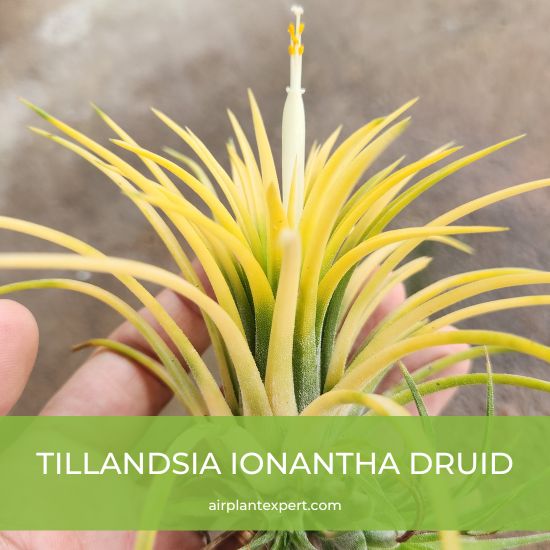
How To Propagate Tillandsia Ionantha Druid
Like most Ionantha, Druid is a prolific propagator and will form into large clumps of multiple plants given time. Therefore, it won’t be long before you’re able to create many more plants.
Air plants are monocarpic which means they die after blooming but before they die the plants develop baby plants/clones called offsets or pups as collectors like to call them.
Every generation of offsets will produce the same white flowers as the mother plants so you’re in for a real treat. You can tease and separate the pups from the mother plant when they reach about a third of her size.
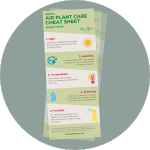
Get Your FREE Air Plant Care Cheat Sheet
5 easy steps to keep your air plants happy and healthy.
Flowers And Expert Tips
For me, this variety is extra special because the plant doesn’t blush red or pink when blooming like all the other varieties of Ionantha.
Instead, the leaves turn a bright yellowish-white and/or peach color before and during the blooming period. To encourage blooming increase the feed to a fortnightly dose.
Also, instead of the usual purple flowers associated with the Ionantha species, Ionanatha Druid’s flowers are unique and have white petals. If I could only own one variety of Ionantha, Druid would be my choice.
Tillandsia Ionantha Druid Hybrids
Druid is native to Mexico and Central America and grows among other varieties of Ionantha such as Guatemala and Stricta.
There is a larger form of Druid named ‘Druid Sumo Size’ which I am not very familiar with. ‘Sumo’ can grow up to 13 cm in height and only slightly blushes, if at all. If you know anything about this variety/hybrid I’d be delighted to hear from you.
I have listed a few Druid hybrids below.
- Tillandsia ‘Wait ‘n See’
- Tillandsia Ionantha ‘Blue Eyed Druid’.
‘Wait ‘n See’ was originally cultivated by Bill Timm. The plant closely resembles Tillandsia Vanhyningii and has a similar caulescent stem.
Little is known about the origin of the ‘Blue Eyed Druid’, its unique characteristic being soft blue flowers rather than the normal white flowers of Druid.

